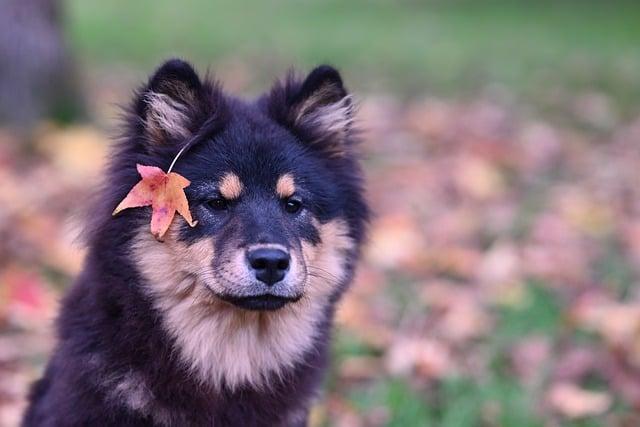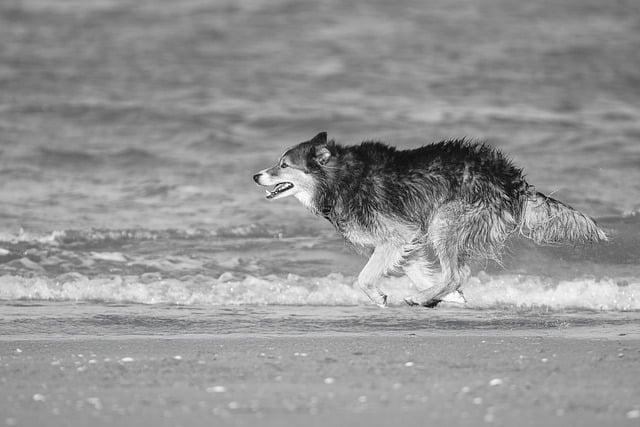In a quiet suburban neighborhood, the Johnson family welcomed a new member: a gentle Golden Retriever named Max. Unlike the fierce guard dogs of their friends, Max greeted every visitor with a wagging tail and a soft nuzzle. One day, a child from next door stumbled into their yard, and instead of barking or growling, Max lay down, inviting the little one to play. His calm demeanor transformed the neighborhood, proving that the least aggressive family dog can be a loving companion, fostering friendships and creating a safe haven for all. Choose wisely; a gentle soul like Max can enrich your family life immeasurably.
Contents
- Understanding the Traits of Gentle Family Dogs
- Top Breeds Known for Their Calm Temperament
- Creating a Harmonious Home Environment for Your Dog
- Expert Tips for Training and Socializing Your Family Pet
- Q&A
Understanding the Traits of Gentle Family Dogs
When considering a family dog, it’s essential to focus on specific traits that contribute to a gentle and loving temperament. **Gentle family dogs** are typically characterized by their calm demeanor, patience, and affectionate nature. These dogs thrive in environments where they can bond with children and adults alike, making them ideal companions for families. Their ability to remain composed in various situations ensures a harmonious household, where both pets and family members can coexist peacefully.
One of the most significant traits of gentle family dogs is their **sociability**. These dogs are naturally inclined to interact positively with people and other animals. They often exhibit a friendly disposition, which can be particularly beneficial in a family setting. A sociable dog is less likely to display aggressive behaviors, as they are more accustomed to being around different individuals and environments. This trait not only enhances the dog’s adaptability but also fosters a sense of security for children who may be interacting with the pet.
Another important characteristic is **trainability**. Gentle family dogs tend to be eager to please their owners, making them more receptive to training and socialization. This willingness to learn can significantly reduce the likelihood of aggressive tendencies, as consistent training helps establish boundaries and reinforces positive behaviors. Families that invest time in training their dogs often find that their pets become well-mannered and reliable companions, further enhancing the overall family dynamic.
Lastly, gentle family dogs often possess a **nurturing instinct**. Many breeds are known for their protective yet gentle nature, making them excellent guardians for children. These dogs can sense when a child is upset or in need of comfort, often providing companionship and support. This nurturing quality not only strengthens the bond between the dog and family members but also teaches children valuable lessons about empathy and responsibility. By choosing a dog with these traits, families can ensure a loving and safe environment for everyone involved.
Top Breeds Known for Their Calm Temperament
When searching for a family dog that embodies a calm demeanor, several breeds stand out due to their gentle nature and adaptability. These dogs not only provide companionship but also create a harmonious environment for families, especially those with children or other pets. Their serene temperament makes them ideal candidates for households seeking a peaceful coexistence.
One breed that consistently ranks high for its calmness is the **Golden Retriever**. Known for their friendly disposition, Golden Retrievers are incredibly patient and tolerant, making them excellent companions for children. Their eagerness to please and gentle nature allow them to thrive in family settings, where they can engage in play without becoming overly excited or aggressive.
Another breed worth considering is the **Basset Hound**. With their laid-back attitude and affectionate personality, Basset Hounds are perfect for families looking for a low-energy dog. Their calm demeanor allows them to adapt well to various living situations, and they are known for their loyalty and love towards their families. This breed is particularly good with children, as they are patient and rarely exhibit aggressive behavior.
Lastly, the **Cavalier King Charles Spaniel** deserves mention for its sweet and gentle temperament. These small dogs are known for their affectionate nature and love for human companionship. They thrive on attention and are incredibly adaptable, making them suitable for families of all sizes. Their calmness and sociable behavior ensure that they fit seamlessly into family life, providing warmth and joy without the stress of aggression.
Creating a Harmonious Home Environment for Your Dog
Creating a peaceful and welcoming atmosphere for your canine companion is essential for their well-being and happiness. A harmonious home environment not only benefits your dog but also enhances the overall quality of life for your entire family. To achieve this, consider the following elements that contribute to a balanced living space:
- Safe Spaces: Designate specific areas in your home where your dog can retreat to feel secure. This could be a cozy bed in a quiet corner or a crate that serves as their personal sanctuary.
- Consistent Routine: Dogs thrive on routine. Establish a daily schedule for feeding, walks, and playtime to help your dog feel more secure and understand what to expect throughout the day.
- Positive Reinforcement: Use positive reinforcement techniques to encourage good behavior. This not only strengthens your bond but also creates a more relaxed environment where your dog feels valued and understood.
- Interactive Play: Engage in regular playtime with your dog to stimulate their mind and body. This can include fetch, tug-of-war, or puzzle toys that challenge them mentally, fostering a sense of fulfillment.
Incorporating elements that promote mental and physical stimulation is crucial for a well-rounded canine experience. Dogs are naturally curious and require activities that engage their senses and intellect. Consider adding:
- Variety of Toys: Provide a range of toys that cater to different play styles, from chew toys to interactive puzzles, ensuring your dog remains entertained and mentally stimulated.
- Training Sessions: Regular training not only reinforces good behavior but also provides mental exercise. Incorporate fun tricks and commands to keep your dog engaged and focused.
- Outdoor Adventures: Explore different environments with your dog, such as parks or hiking trails. New sights and smells can invigorate your dog’s senses and contribute to their overall happiness.
Creating a harmonious home environment also involves fostering positive relationships among family members and your dog. Encourage everyone in the household to participate in your dog’s care and training. This collaborative approach helps your dog feel loved and secure, as they learn to trust each family member. Consider these strategies:
- Family Involvement: Assign specific responsibilities to each family member, such as feeding, walking, or grooming, to promote a sense of teamwork and shared responsibility.
- Socialization Opportunities: Introduce your dog to various people and other pets in a controlled manner. This helps them develop social skills and reduces anxiety in new situations.
- Consistent Commands: Ensure that everyone uses the same commands and cues when interacting with your dog. Consistency is key to avoiding confusion and reinforcing training.
Lastly, maintaining a clean and organized living space is vital for your dog’s health and happiness. A clutter-free environment reduces stress and potential hazards for your pet. Implement these practices to keep your home dog-friendly:
- Regular Cleaning: Keep your home tidy by regularly cleaning up pet hair, toys, and food spills to create a pleasant living space for both your dog and your family.
- Safe Storage: Store hazardous items, such as cleaning supplies and small objects, out of your dog’s reach to prevent accidents and ensure their safety.
- Comfortable Environment: Adjust the temperature and lighting in your home to create a comfortable atmosphere for your dog, ensuring they have a cozy place to relax.
Expert Tips for Training and Socializing Your Family Pet
Training and socializing your family pet is essential for fostering a harmonious home environment. Start by establishing a consistent routine that includes daily training sessions. This not only reinforces good behavior but also strengthens the bond between you and your dog. Use positive reinforcement techniques such as treats, praise, and playtime to encourage desired behaviors. Remember, patience is key; every dog learns at their own pace.
Socialization is equally important, especially for breeds known for their gentle demeanor. Introduce your dog to a variety of environments, people, and other animals. This exposure helps them become well-adjusted and reduces anxiety in new situations. Consider the following tips for effective socialization:
- Start Early: Begin socializing your puppy as soon as they are vaccinated.
- Gradual Exposure: Introduce new experiences slowly to avoid overwhelming your pet.
- Positive Associations: Pair new experiences with treats and praise to create positive memories.
Incorporating basic obedience commands into your training routine can also enhance your dog’s social skills. Commands such as “sit,” ”stay,” and “come” not only promote good behavior but also provide a sense of structure for your pet. Regular practice in different settings will help your dog learn to respond reliably, even in distracting environments. This is particularly beneficial when interacting with children or other pets.
consider enrolling your dog in a training class or socialization group. These settings provide controlled environments where your pet can learn alongside others. Professional trainers can offer valuable insights and techniques tailored to your dog’s specific needs. Engaging with other dog owners can also provide support and encouragement, making the training process more enjoyable for both you and your furry friend.
Q&A
-
What breeds are considered the least aggressive family dogs?
Some of the least aggressive family dog breeds include:
- Golden Retriever
- Labrador Retriever
- Beagle
- Bichon Frise
- Cavalier King Charles Spaniel
These breeds are known for their friendly and gentle nature, making them excellent companions for families.
-
How can I ensure my dog is not aggressive?
To promote a non-aggressive demeanor in your dog, consider the following:
- Early socialization with people and other pets
- Consistent training using positive reinforcement
- Regular exercise to reduce anxiety and stress
- Providing a stable and loving environment
These practices help foster a calm and friendly temperament in your dog.
-
Are there specific traits to look for in a family dog?
When choosing a family dog, look for traits such as:
- Gentle disposition
- High tolerance for children
- Willingness to learn and obey commands
- Affectionate nature
These characteristics are essential for a harmonious family dynamic.
-
Can training reduce aggression in dogs?
Absolutely! Training plays a crucial role in managing and reducing aggression. Effective training methods include:
- Obedience training to establish boundaries
- Socialization classes to expose dogs to various environments
- Behavior modification techniques to address specific issues
With proper training, even dogs with a tendency toward aggression can become well-mannered family members.
choosing the least aggressive family dog can foster a harmonious home environment. By prioritizing breeds known for their gentle nature, you ensure a loving companion that enriches your family’s life. Make the right choice for lasting joy!




